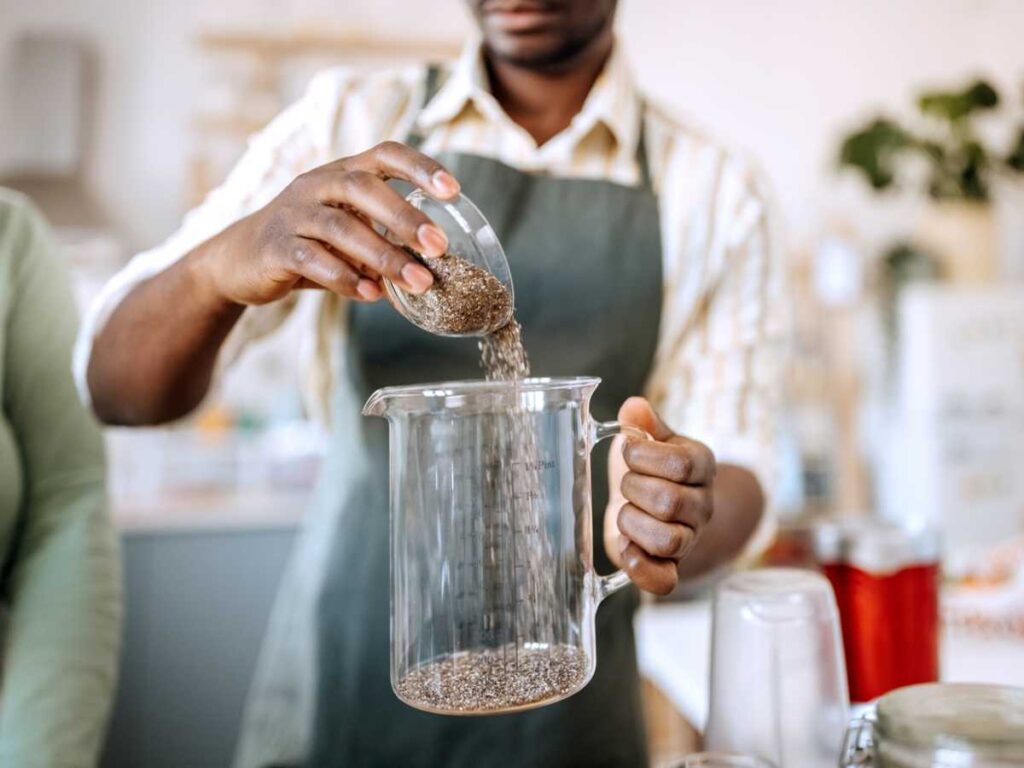How Many Cups Are in a Gallon?
Understanding the relationship between cups and gallons is essential in various contexts, from cooking and baking to measuring liquids for industrial or scientific purposes. While the conversion between these two units may seem straightforward, it’s important to have a clear understanding of the exact relationship to ensure accurate measurements and avoid potential mistakes.In this comprehensive article, we’ll explore the details of cups and gallons, including their definitions, the conversion process, and practical applications.
Key Facts about Cups and Gallons
| Fact | Source |
|---|---|
| 1 U.S. liquid gallon is equal to 16 U.S. fluid cups. | Wikipedia |
| The U.S. liquid gallon is a unit of volume in the United States customary measurement system, while the cup is a smaller unit of volume in the same system. | Wikipedia |
| Cups and gallons are commonly used to measure the volume of liquids, such as water, milk, oil, and other beverages. | N/A |
| Precise measurement is crucial in various fields, including cooking, baking, and industrial processes, where accurate volumes are essential for achieving desired results. | N/A |
| Conversion between cups and gallons is a straightforward process, but it’s important to understand the relationship between the two units to avoid mistakes. | N/A |
Understanding Cups and Gallons
Cups and gallons are both units of volume in the United States customary measurement system. A gallon is a larger unit of volume, while a cup is a smaller unit.
Gallon (gal)
The gallon is a unit of volume in the United States customary measurement system. One U.S. liquid gallon is defined as 231 cubic inches or 3.785411784 liters.
Cup (c)
The cup is a unit of volume in the United States customary measurement system. One U.S. fluid cup is defined as 1/16 of a U.S. liquid gallon or 240 milliliters.
Conversion Between Cups and Gallons
Converting between cups and gallons is a straightforward process. The key relationship to remember is that 1 U.S. liquid gallon is equal to 16 U.S. fluid cups.To convert from gallons to cups, you simply need to multiply the number of gallons by 16. For example, 2 gallons is equal to 32 cups.Conversely, to convert from cups to gallons, you need to divide the number of cups by 16. For instance, 64 cups is equal to 4 gallons.Here’s a simple formula to remember:Cups c Gallons gal 16
Gallons gal Cups c 16
Practical Applications of Cups and Gallons
Cups and gallons are used in a variety of contexts, including:
Cooking and Baking
In the culinary world, cups and gallons are used to measure the volume of liquids, such as water, milk, oil, and other beverages. Precise measurement is important to ensure the correct balance of ingredients and to follow recipes accurately.
Industrial Processes
In industrial settings, cups and gallons may be used to measure the volume of various liquids, such as chemicals, fuels, or lubricants. Accurate measurement is essential to ensure the proper functioning of equipment and to comply with safety regulations.
Scientific Research
Cups and gallons are sometimes used in scientific research to measure the volume of liquids used in experiments or procedures. While the metric system is more commonly used in scientific contexts, the U.S. customary system is still used in some cases.
Everyday Life
In everyday situations, cups and gallons may be used to measure the volume of liquids, such as when filling a container or measuring the fuel capacity of a vehicle.
Potential Pitfalls and Considerations
While the conversion between cups and gallons is straightforward, it’s important to be mindful of potential pitfalls and considerations:
Precision and Accuracy
Accurate measurement is crucial, especially in fields like cooking, baking, and industrial processes. Mistakes in unit conversion can lead to undesirable results, so it’s essential to double-check your calculations and use the appropriate measuring tools.
Rounding and Significant Figures
When converting between cups and gallons, it’s important to consider the appropriate number of significant figures and to round the result to the correct level of precision. Rounding errors can lead to inaccuracies, particularly in sensitive applications.
Context and Units
Always be aware of the context in which cups and gallons are being used. Ensure that you are using the correct unit for the specific application, as mixing up units can lead to significant errors.
Conclusion
Cups and gallons are fundamental units of volume in the United States customary measurement system, and understanding the relationship between them is essential in various fields, from cooking and baking to industrial processes and scientific research.By mastering the conversion process and being mindful of potential pitfalls, you can ensure accurate measurements and make informed decisions when working with volumes of liquids. Whether you’re a chef, an industrial worker, a scientist, or simply someone interested in unit conversions, this comprehensive guide has provided you with the knowledge and tools to confidently navigate the world of cups and gallons.
FAQ: How Many Cups Are in a Gallon?
1. What is the relationship between cups and gallons?
1 U.S. liquid gallon is equal to 16 U.S. fluid cups. Cups are a smaller unit of volume in the United States customary measurement system, while gallons are a larger unit.
2. How do you convert from gallons to cups?
To convert from gallons to cups, you multiply the number of gallons by 16. For example, 2 gallons is equal to 32 cups.
3. How do you convert from cups to gallons?
To convert from cups to gallons, you divide the number of cups by 16. For instance, 64 cups is equal to 4 gallons.
4. Why is it important to understand the relationship between cups and gallons?
Accurate measurement is crucial in various fields, such as cooking, baking, and industrial processes, where precise volumes are essential for achieving desired results. Understanding the conversion between cups and gallons helps to avoid mistakes and ensure proper measurements.
5. In what contexts are cups and gallons commonly used?
Cups and gallons are commonly used in cooking and baking to measure the volume of liquids, in industrial processes to measure the volume of various liquids, in scientific research to measure the volume of liquids used in experiments, and in everyday life to measure the volume of liquids.
6. What are some potential pitfalls to be aware of when working with cups and gallons?
Potential pitfalls include the need for precision and accuracy, the importance of rounding and significant figures, and the need to be aware of the context and units being used to avoid mixing them up.
7. Why is it important to be able to convert between cups and gallons confidently?
The ability to confidently convert between cups and gallons is essential in various fields, as it allows for accurate measurements, proper dosing of ingredients, and the precise handling of liquid volumes. This knowledge can have significant implications for safety, quality, and decision-making



